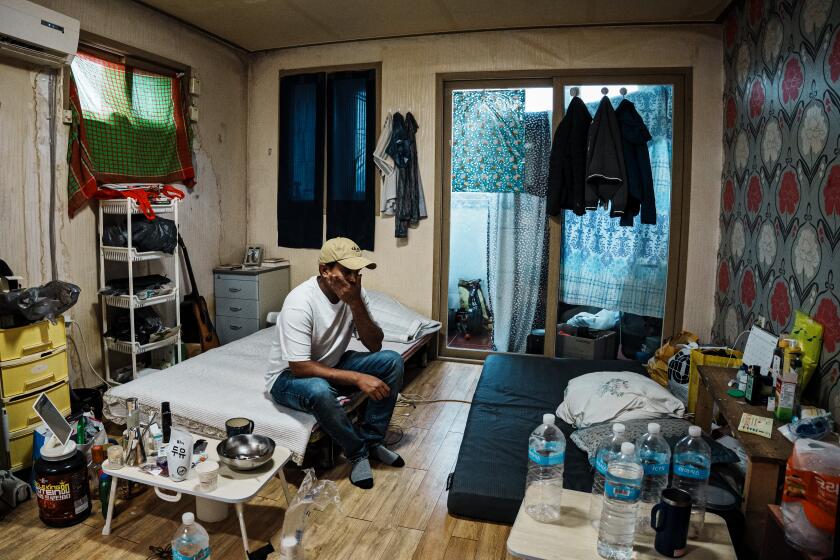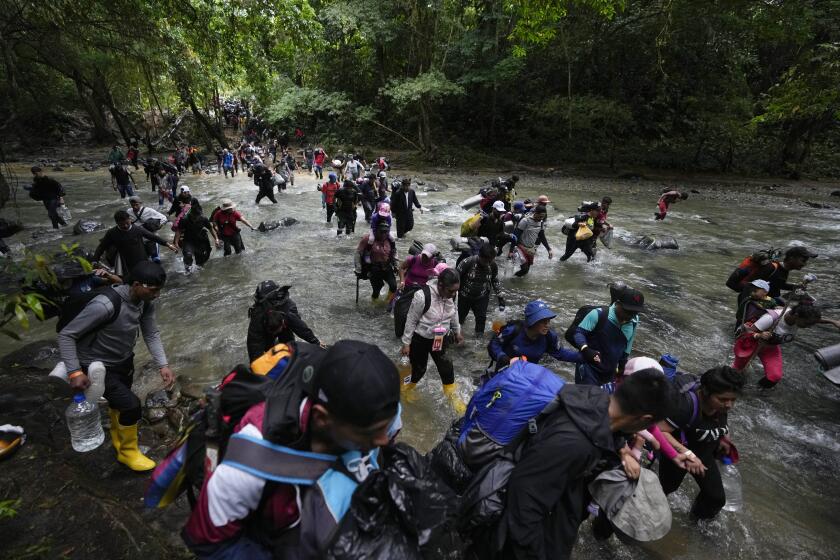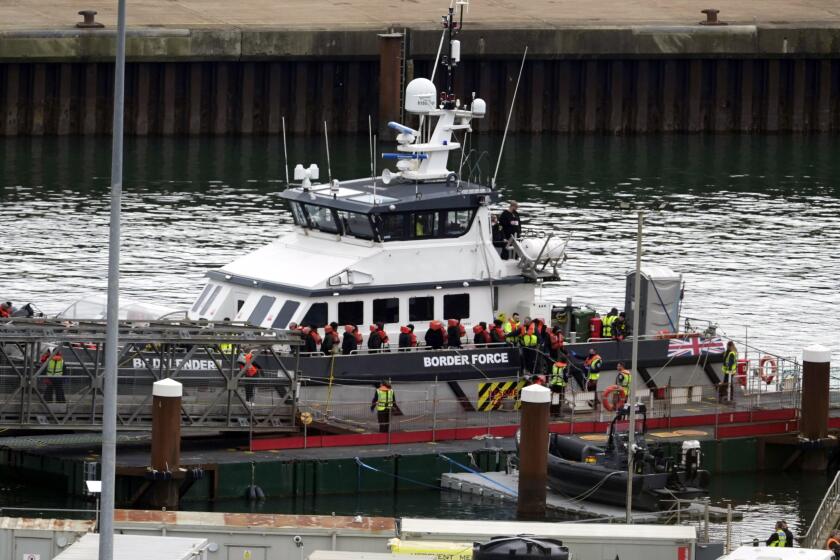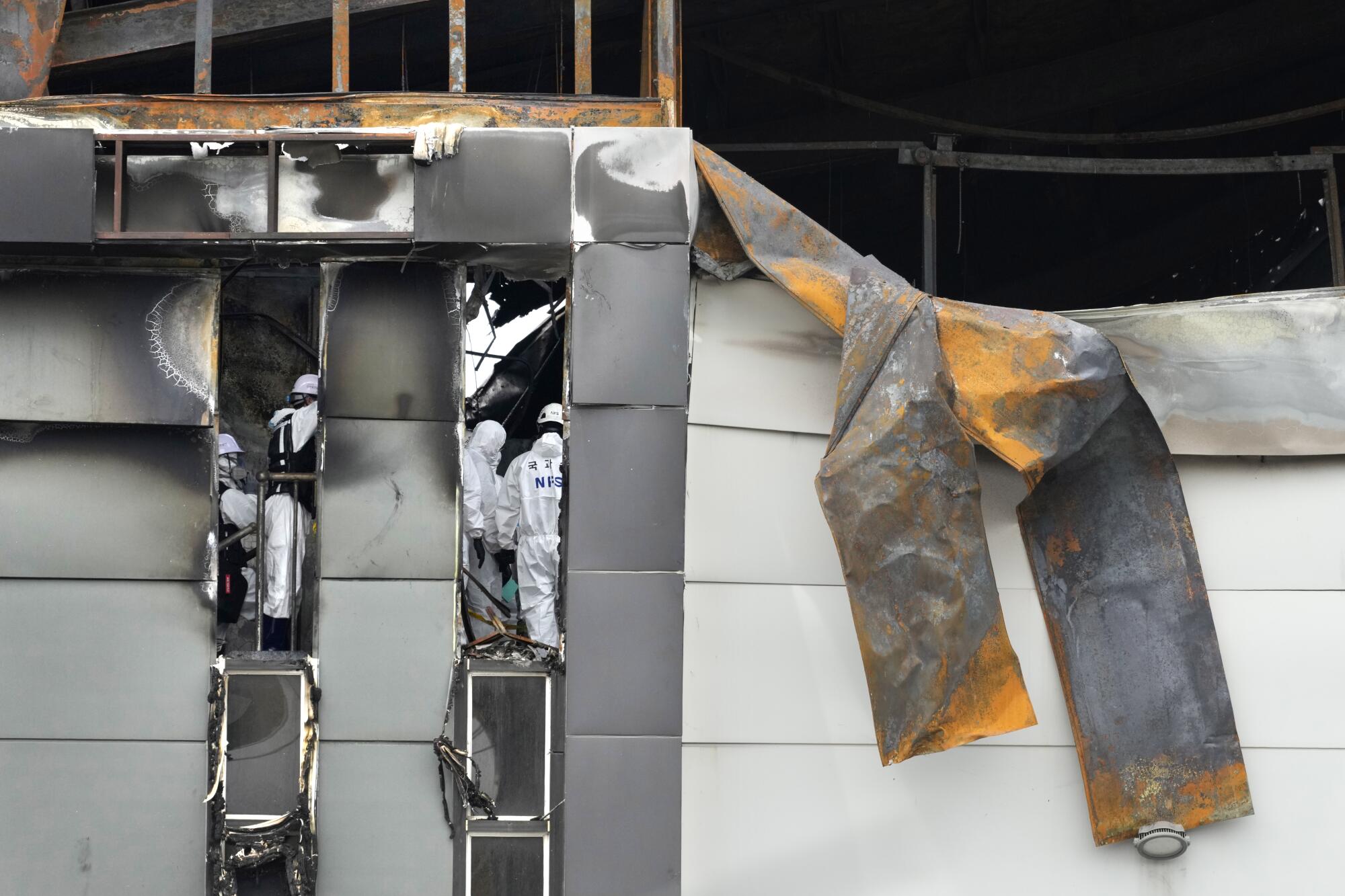
- Share via
SEOUL — The workers never stood a chance.
Security video from a lithium battery factory south of Seoul in the city of Hwaseong on Monday morning shows a puff of smoke as one worker scrambles to move battery cases and another sprays a fire extinguisher in vain.
The cases begin to explode in a flash of yellow before the camera goes dark.
As explosions shook the street, firefighters on the scene could only watch what became the deadliest chemical factory fire in South Korean history, with 23 people killed.
That toll was also notable because 18 of the victims were foreigners — 17 from China and one from Laos — casting a spotlight on the country’s increasing reliance on migrant workers and the harsh workplace conditions they sometimes face.
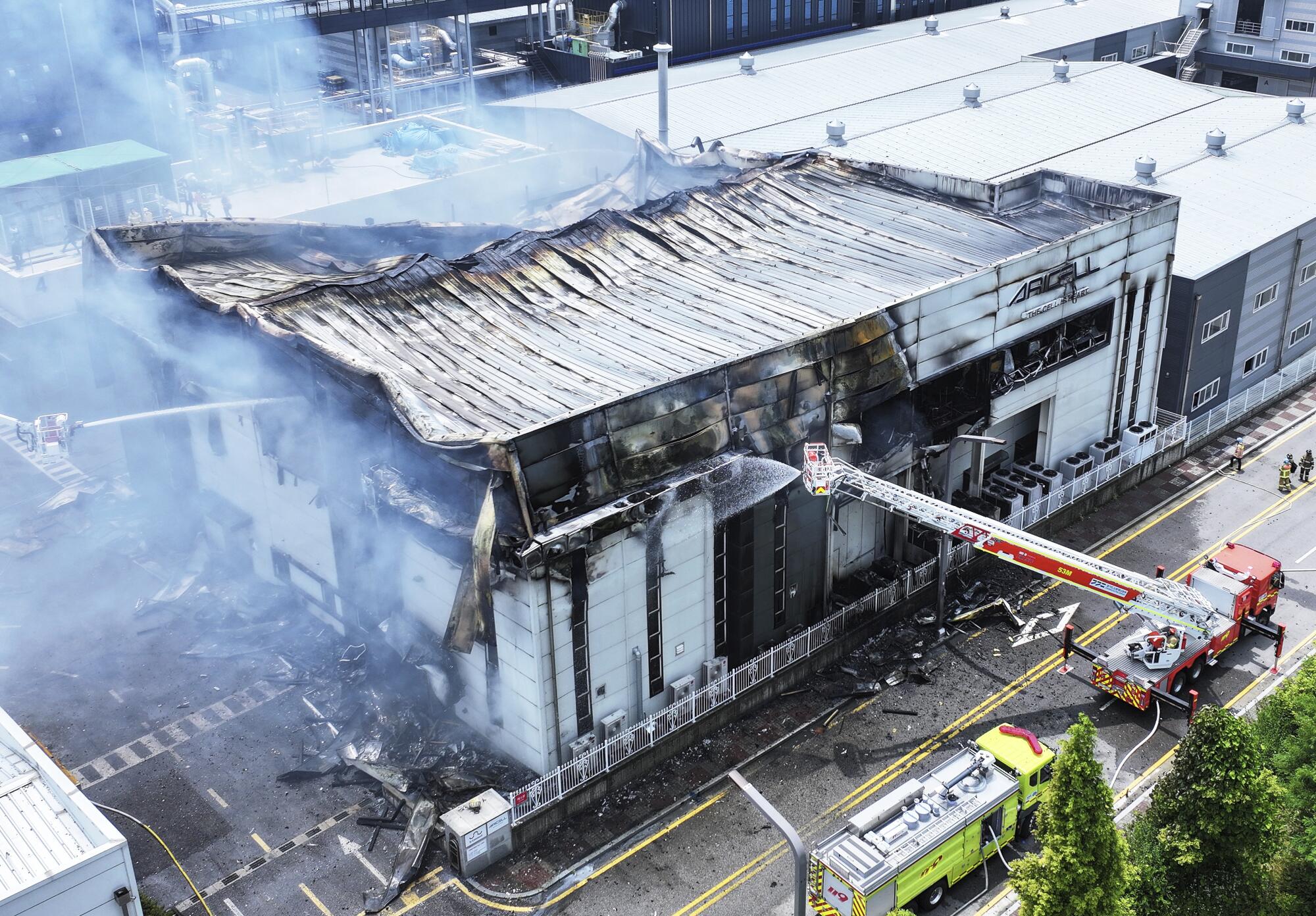
“It has exposed bare the realities of South Korea’s pursuit of cheap labor,” said Choi Jung-kyu, a labor activist and attorney who is assisting the families of the dead.
Years of low birthrates have caused severe labor shortages in manufacturing, increasingly eschewed by South Koreans for its low pay and harsh working conditions. Workers from China and Southeast Asia are filling their place.
As South Korea’s migrant labor program ramps up recruitment, it faces scrutiny for what critics say is a failure to guarantee safe working conditions.
There are currently about 426,000 temporary migrant workers in South Korea, with around 165,000 of them ethnic Koreans from China or Central Asia, who are eligible for special visas to live and work in the country. The country is on track to add at least 165,000 more this year.
Migrants usually find work in small to medium manufacturing companies, where labor advocates say occupational safety standards are lax compared with larger workplaces, making accidents common.
In South Korea, foreigners made up roughly 9% of the manufacturing workforce in 2021 but accounted for 18% of its 184 accidental deaths, The Times reported last year.
The workers who died this week had been sent to Aricell, a supplier of lithium batteries for the South Korea military, by a temp agency.
The company has run afoul of safety regulations before, regional fire chief Jo Seon-ho said at a news conference Tuesday.
In 2019, it was fined for storing 23 times the amount of lithium permitted. A year later, it was ordered to fix dysfunctional fire safety systems.
In a routine safety inspection last March, the local fire department singled out the building that burned this week as a potential fire hazard. And despite a faulty battery having caught fire just two days before the inferno, the company had neglected to alert the fire department.
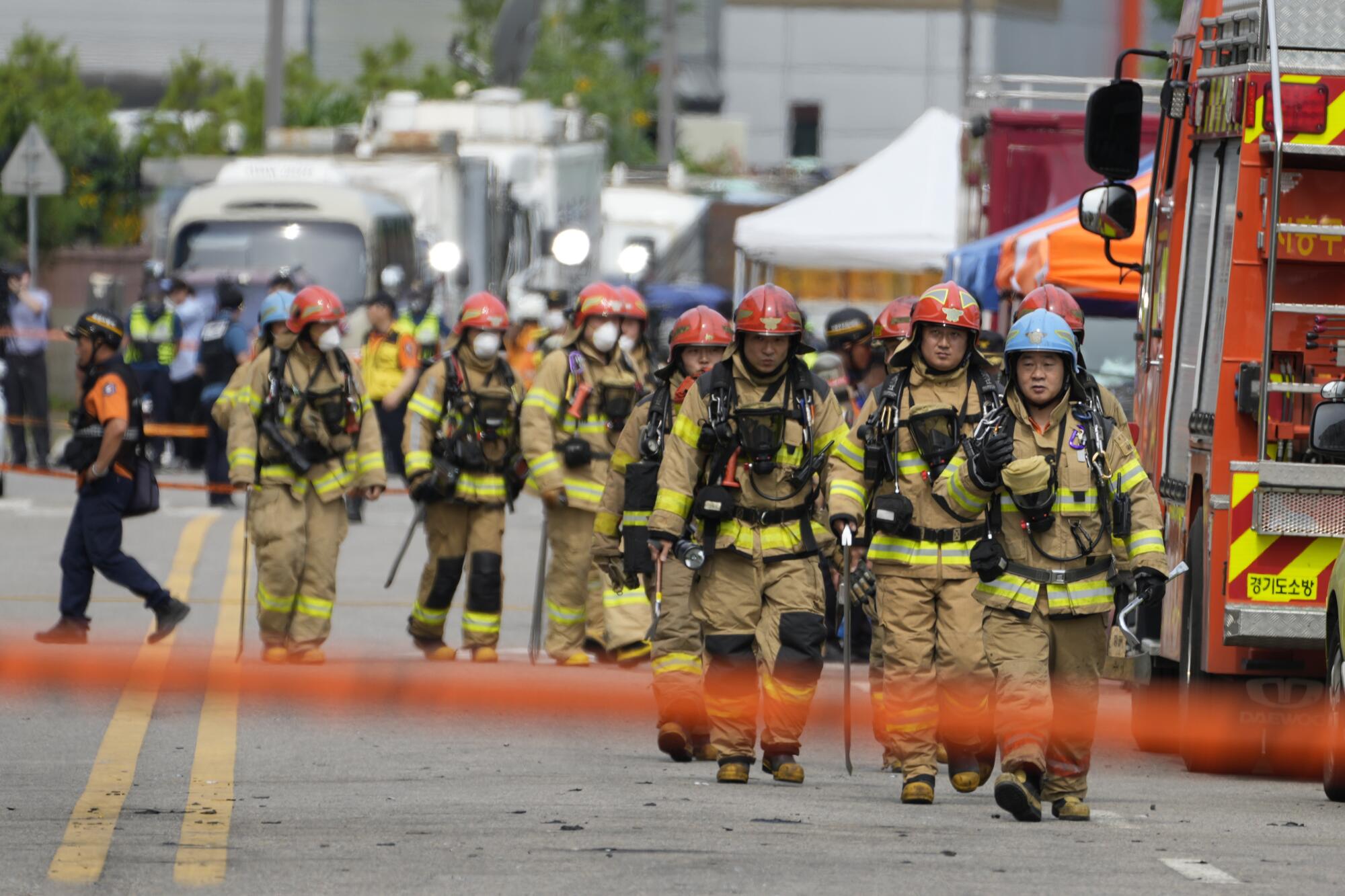
By the time firefighters could enter the building, five hours after the fire began, the bodies of the victims were so badly burned that it has taken four days to identify them with DNA testing.
They were discovered on the second floor near a wall far from the exit. Authorities believe that, in the chaos of the fire, they accidentally trapped themselves inside.
“It appears that the workers fell victim to the toxic fumes that spread in a very short time,” Jo said. “Most of them were day laborers, so we believe that the fact that they were unfamiliar with the layout of the building played a part as well.”
President-elect José Raúl Mulino of Panama says he will shut down a migration route used by more than 500,000 people last year.
On Thursday, police raided the offices of Aricell and the temp agency that provided the workers, arresting five people in an investigation centered on whether the company violated industrial safety laws.
Park Soon-kwan, the company’s chief executive, has apologized for the incident but denied allegations that the company neglected worker safety.
“We routinely conducted safety training and received regular safety inspections,” Park said at a news conference at the factory Tuesday. “We have fire warning systems, fire extinguishers and evacuation manuals to help people easily find exits.”
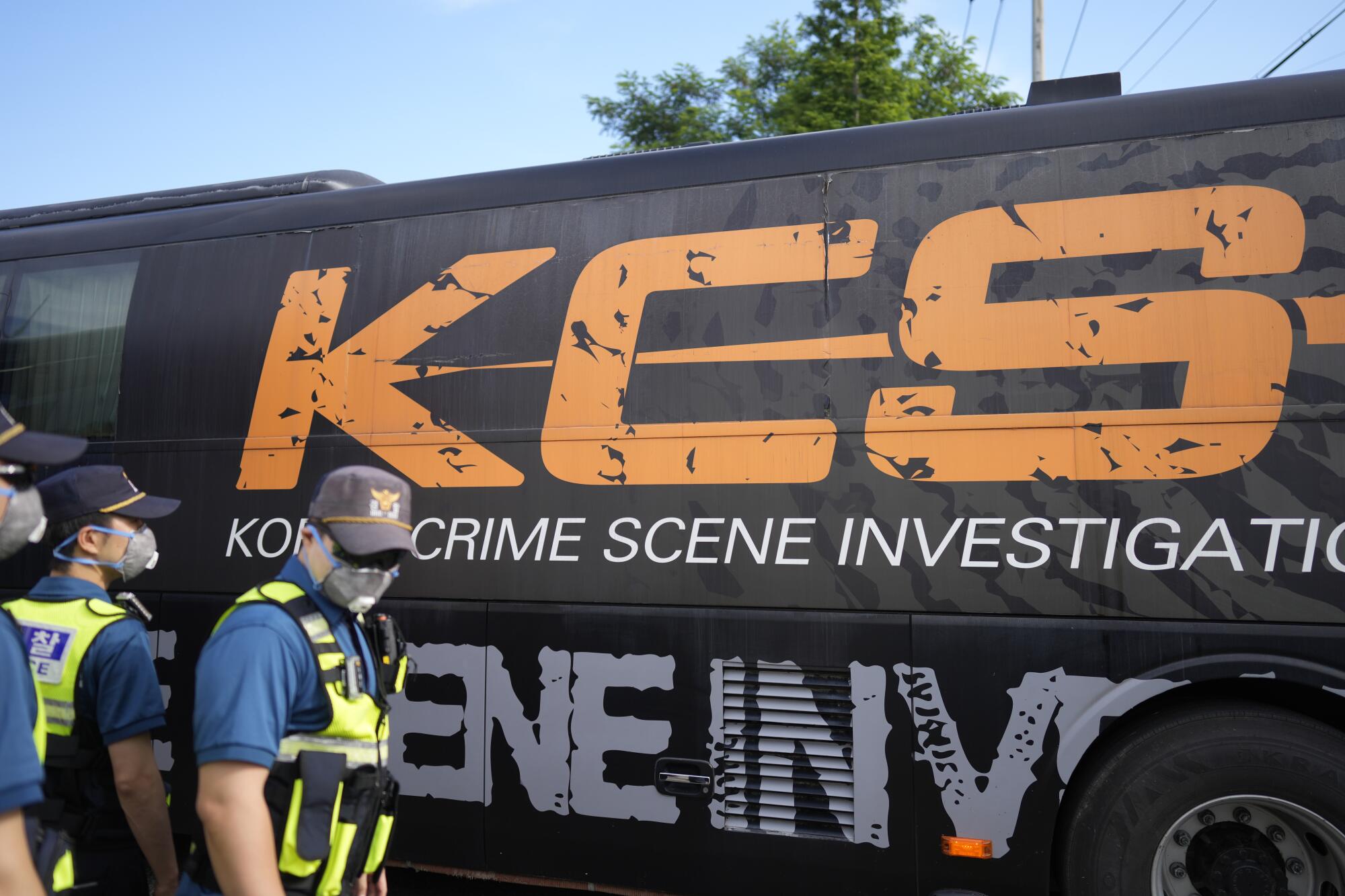
Choi, the labor attorney, questioned how airtight the company’s safety training could have been.
“Would what they call routine safety training have been of any use for day laborers?” he said. “It’s a system that is fundamentally flawed because it’s not like they can redo all the safety training every time someone new comes in.”
Lithium batteries can combust from moisture, external impact or faulty manufacturing, making fires an ever-present threat for which manufacturers should be prepared, experts say.
A 7-year-old girl is among the dead. The vessel was just one of several packed boats that departed from France, enticed by calm weather.
Aricell’s product — a military-grade, nonrechargeable battery — was especially dangerous, according to Park Chul-wan, a battery expert at Seojeong University.
Used for portable military devices like walkie-talkies, the batteries contain a chemical called thionyl chloride, which is preferred for its high energy density. But if vaporized in a fire, the chemical is highly corrosive to the eyes, skin and throat.

“It makes the window to get to safety incredibly short,“ Park said. “The moment the room fills with this vapor, anyone would instantly panic and fall to the ground.”
Lithium battery fires are exceptionally difficult to put out. Because temperatures can quickly reach more than 2,000 degrees, standard extinguishers or even water from sprinklers won’t work.
The best hope, according to Park, is an overwhelmingly large volume of water, or a specialized fire extinguisher graded for metal fires.
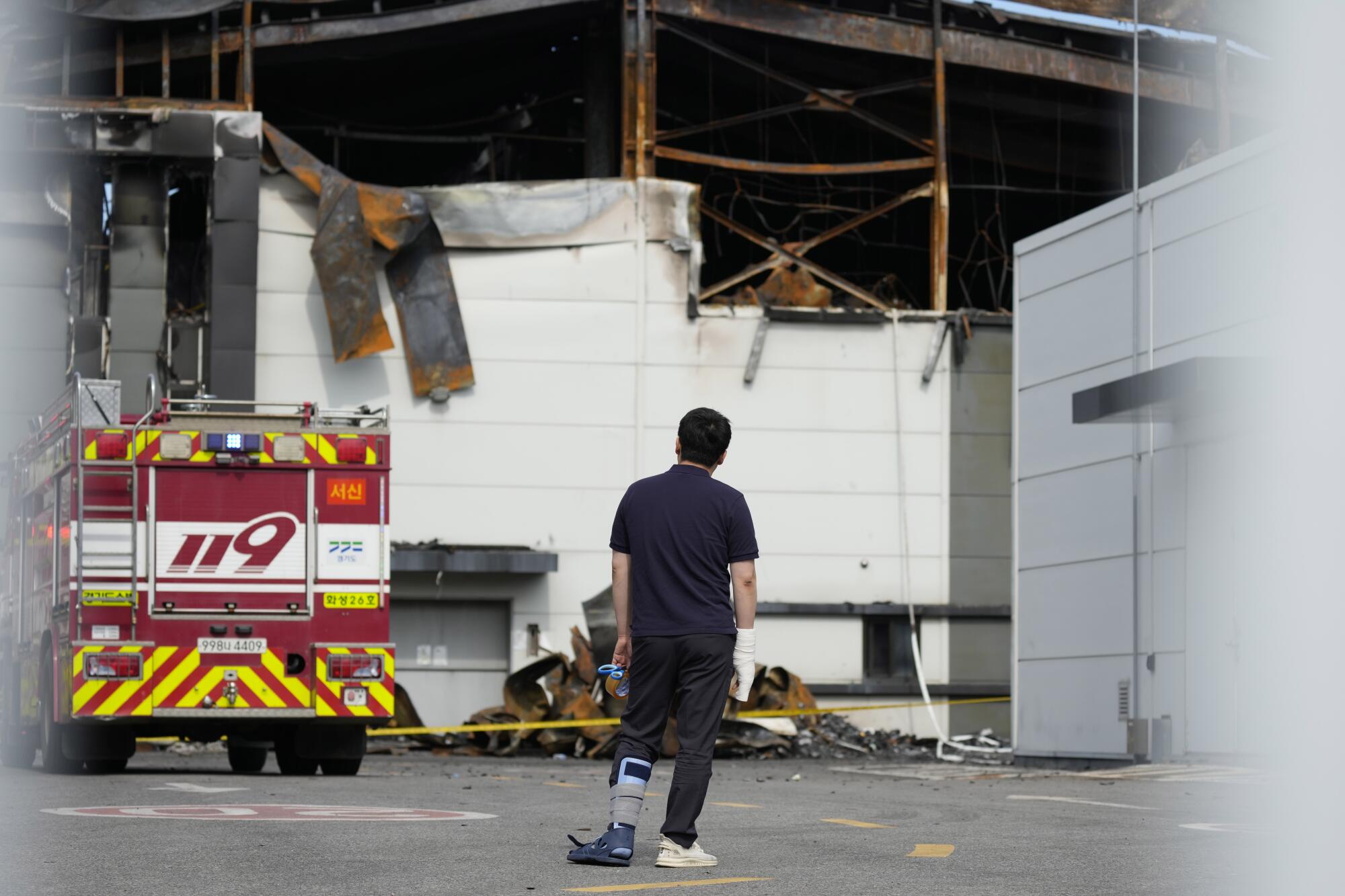
But in South Korea, the provision of these special fire extinguishers isn’t mandated by law. And although the company has said that it had several of these extinguishers on the premises, they were not the ones the workers had at hand.
Outside the smoldering factory, a family member of one of the migrants who died threaded his way through the fire trucks until he was stopped by a group of reporters.
“What is this?” he said. “Safety should have been observed. We foreigners are made to do the lowest form of labor. How can this stand?”
More to Read
Sign up for Essential California
The most important California stories and recommendations in your inbox every morning.
You may occasionally receive promotional content from the Los Angeles Times.
